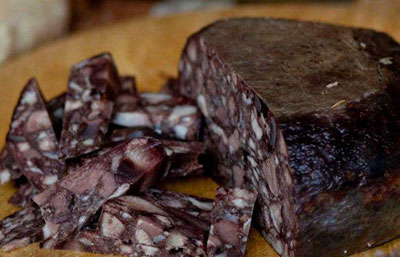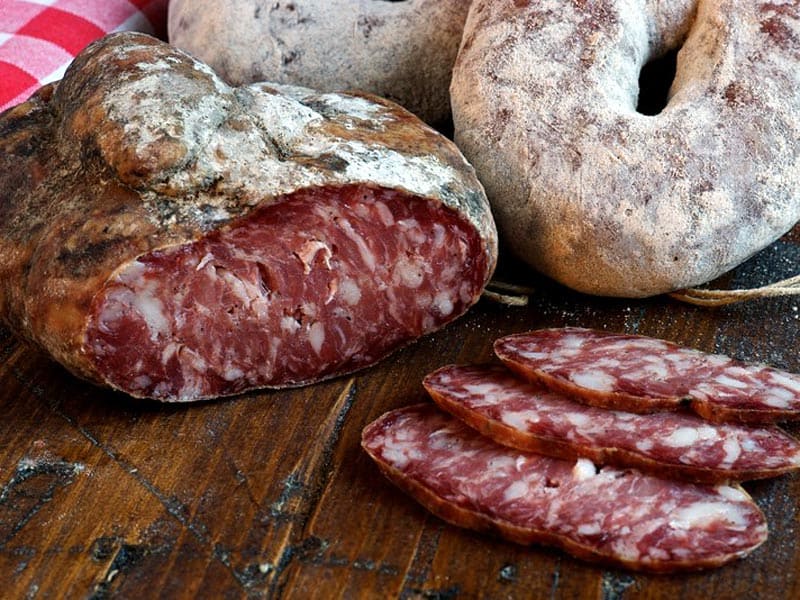There are not only the hills with cypresses on top, the villages perched on tuff hillocks, the islands surrounded by an enchanting sea, and the countless cities of art scattered from north to south. Tuscany is also more. It is also a region of wooded mountains and valleys, high and sometimes rugged lands that are lost in the heart of the Tuscan-Emilian Apennines, lands of streams and scents, but also of villages of history and flavors.
The heart of this geographic area in the far north of Tuscany, a land that Ariosto called “Land of wolves and brigands,” is the village of Castiglione di Garfagnana, a walled center lost in the woods among the wilderness. Already surrounded by walls and towers shortly after the year 1000, Castiglione di Garfagnana was often subjected to sieges, but it was also the most important castle of the Republic of Lucca, defending its territory from the neighboring Duchy of Modena.
Dating back to 1371 is the circle of walls and towers that frame its built-up area rich in historical evidence, culture and traditions, and it is the Porta del Ponte Levatoio, one of the three access gates to the town, that allows us to land in the ancient center. While Piazza del Castello is home to the Renaissance 16th-century palace of the parliament, now the Town Hall, and Palazzo Nobili, the palaces of the ancient local noble families overlook Via Roma.
The churches of San Michele and San Pietro are worth seeing. The former, consecrated in the early 15th century, has a late Gothic facade in gray stone, red and white marble, and an interior that holds a precious testimony to 14th-century Lucca painting, the “Madonna and Child” by Giuliano di Simone di Lucca, painted in 1389 in tempera on panel; the ciborium made of Carrara marble containing the “holy oils,” with classical Greek and Roman decorative motifs, from the school of Matteo Civitali; a valuable 14th-century wooden crucifix; and the wooden statue of the Madonna and Child. The second, consecrated in 1197, is located close to the fortress and offers the three wooden statues of Saints Peter and Paul with the statue of the Blessed Virgin of Mount Carmel in the center, the work of Vincenzo Civitali, the high altar decorated in gilded wood and a seventeenth-century altar frontal decorating the altar of the Madonna of the Seven Colors. The medieval fortress, around which the settlement developed, dominates the village and provides an unmissable view of the village and Garfagnana.
The beauty of the place is combined with gastronomic specialties. In addition to the fruits of the woods and countryside, Castiglione di Garfagnana and its territory are also told through authentic delicacies such as Mondiola, Biroldo, and the typical potato bread.
Produced since the area’s farmers began raising and slaughtering pigs, Mondiola, the classic Garfagnana salami, is a soft-textured sausage with a pleasant, spicy aroma from the mixture made by grinding meat that is then mixed with salt, pepper, local spices and cloves. Singular is its u-shape; in fact, the cured meat is folded and, after the addition of a bay leaf in the center, its two ends are connected.

Photo Parco Nazionale Appennino Tosco-Emiliano
Biroldo also has very ancient origins. A spicy-tasting, dark-colored cured meat with a slightly flattened ball shape, it is an ancient and distinctive blood sausage. For its preparation, only the pig’s head is used, which is boiled for three hours; it is boned and a small amount of blood is added to which salt, pepper, nutmeg, cinnamon, cloves, star anise and wild fennel are then added. Biroldo can be eaten cut into strips, accompanied by the typical Garfagnana chestnut bread or potato bread, or warmed in a pan.
Instead, it is the rustic bread of the area that is made with potatoes, a poor food born of the need, in years when grains were scarce, to supplement wheat flour with boiled potatoes. Adding potatoes once made it possible to keep bread for several days; in the local tradition, in fact, bread was made only once a week, usually on Saturdays.



0 Comment